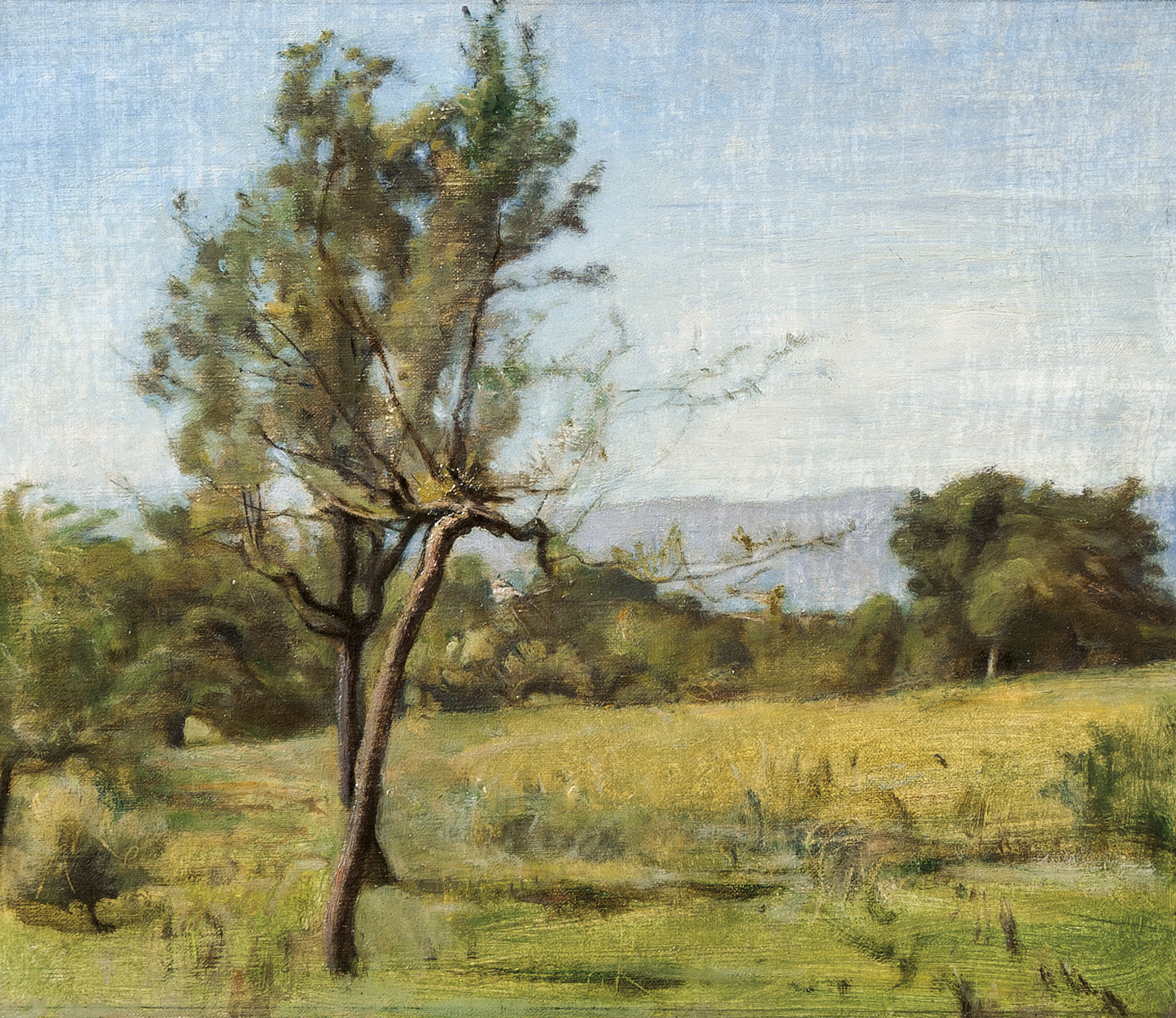Barthélemy Menn is considered a renewer of 19th century Swiss painting. Born in Geneva, he was studying in Paris at least in 1833, where he worked in Ingres’s studio. He left for Italy in 1835, then returned to Paris, where he met Camille Corot and Eugène Delacroix, and befriended the landscape artists of the Barbizon school.
Back in Geneva, he was made a professor at the École de dessin in 1850 and would spend forty-two years teaching there. An exceptional instructor, he notably trained the artists Ferdinand Hodler and Édouard Vallet. His teaching activities had their final achievement in the Société des humanistes, or Humanist Society project, which imagined a relationship of equality between teachers and students around the making of art.
In his own painting, he avoided grandiloquence and preferred showcasing topographical elements without striving for detailed description. Style and colour come together in free compositions that do not hew to the precepts of the day.
An innovative painter, Menn earned his living thanks to his teaching whilst his work remained largely misunderstood in his lifetime. At sixty he destroyed nearly the whole of his earlier efforts, without giving up painting.
Applying his own teaching ideas to himself, he was to copy throughout his life earlier established painters that were dear to him, especially Raphael, Théodore Géricault, Claude Lorrain and Veronese. The aim was to immerse himself in their art the better to free himself from it and find his own personal way.
Back in Geneva, he was made a professor at the École de dessin in 1850 and would spend forty-two years teaching there. An exceptional instructor, he notably trained the artists Ferdinand Hodler and Édouard Vallet. His teaching activities had their final achievement in the Société des humanistes, or Humanist Society project, which imagined a relationship of equality between teachers and students around the making of art.
In his own painting, he avoided grandiloquence and preferred showcasing topographical elements without striving for detailed description. Style and colour come together in free compositions that do not hew to the precepts of the day.
An innovative painter, Menn earned his living thanks to his teaching whilst his work remained largely misunderstood in his lifetime. At sixty he destroyed nearly the whole of his earlier efforts, without giving up painting.
Applying his own teaching ideas to himself, he was to copy throughout his life earlier established painters that were dear to him, especially Raphael, Théodore Géricault, Claude Lorrain and Veronese. The aim was to immerse himself in their art the better to free himself from it and find his own personal way.
